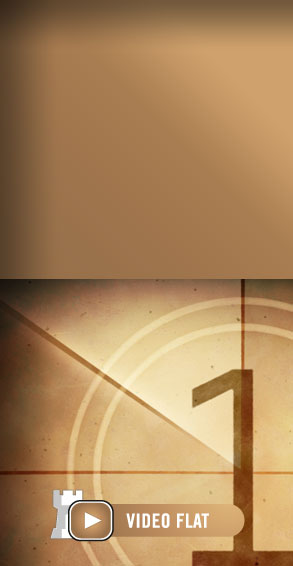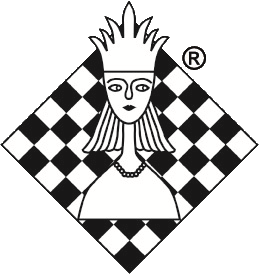
The tournament is taking place in the Ugorian Chess Academy in the very heart
of Khanty-Mansiysk, which has hosted three previous World Cups: 2005,
2007,
and 2009.
The 128 participants hail from 46 different countries, and are playing for a
total prize fund of US $1.6 million. In addition the first three finisher get
tickets to the Candidates tournament in the next World Championship cycle.
A different view: the underdog…
By GM Efstratios Grivas

The internationally known trainer Efstratios Grivas
The FIDE World Cup which started in the Russian city of Khanty-Mansiysk last
Saturday, is an important event as it is not only gathering many of the (near
to) top players but it is also a preliminary tournament for challenging the
title of the World Champion. 128 players from around 50 countries are trying
their best on this knock-out system but of course the main interest of the public
is focused on the very cream of the top and rarely on the lowest rated players…
And this is a pity, as for these lower rated players and their countries their
participation is an important moment for themselves, the federations and the
countries. But this is life: the winner takes it all, the loser
standing small, beside the victory (Abba).
That's their destiny!

Grivas and the Turkish team in 2010 at a training camp in Bodrum
In the last European Individual Championship which held in Aix-les-Bains last
March, I was helping (training – coaching) the Turkish participants in
their try for qualification to the FIDE WC. I have been cooperating with the
Turkish Chess Federation since middle 2006, from the position of the Head Trainer
of the Men’s National Team, so in a way I grew-up with a lot of ‘kids’
that today they have become GMs or about to (Baris Esen, Emre Can, Mustafa Yilmaz,
Kivanc Haznedaroglu, Mert Erdogdu and others).

One of the top Turkish players, GM Baris Esen, rated 2543
The mission was successful as one of them (Baris Esen) qualified… And
if this does not look like something special for a lot of countries, for Turkey
it was a nice touch, as this was the first time that a native Turkish player
did it! The Turkish Chess Federation (and especially the ever active President
Ali Nihat Yazici) was happy enough for that and tried of course to help its
player to have a decent performance in the WC. Three GM trainers (Efstratios
Grivas, Mikhail Gurevich and Evgeny Miroschnichenko) were involved in his preparation
and accompanied him in Khanty Mansiysk.
Our squad was even the first to arrive on 23rd August for better acclimatisation
and some more preparation. The opponent of the Turkish player, GM Alexander
Moiseenko from Ukraine with a rating of 2715 was of course a very hard nut to
crack and our GM player with an ‘only’ 2543 rating was the clearly
underdog…
In the first game the Turkish player chose an ‘easy’ line which
brought him no problems, but he also didn’t pose any to his opponent as
well. After a technical and rather correct game, a draw was agreed.
In the second game White did not go for the most critical lines and choose
instead a ‘quiet’ variation. The Turkish player didn’t ‘understand’
his position in depth, he didn’t play well and he went down rather in
no time.
So, the next morning we had to make our way back home. We found ourselves in
an early flight to Moscow with a lot of other unhappy faces – players
who had been knocked out as well! The show will go on and life will continue.
The Turkish player went back home wiser and with more passion to further improve
his position in the chess world in the years to come… And what is for
sure, the Turkish Chess Federation will stand next to him…
Efstratios Grivas
Efstratios Grivas is a grandmaster and highly experienced chess trainer
and chess author. He lives in Athens, and he is also a FIDE Senior Trainer
(Secretary of the FIDE Trainers' Commission), an International FIDE
Chess Arbiter and an International FIDE Chess Organizer. He has represented
his country on a great many occasions, winning the fourth position in
the World Junior Championship 1985, an individual gold medal at the
1989 European Team Championship and an individual silver medal at the
1998 Olympiad.
In 2010 he was awarded the worldwide highly important FIDE TRG Awards
– the Boleslavsky Medal (best author) for 2009.
Visit the Efstratios
Grivas chess site |
 |
Training DVDs by Efstratios Grivas


Chess Expertise Step by Step Vols. 1 and 2. Click for more informantion
See also
 |
Grivas Training: Building a Repertoire
18.04.2011 – "In contrast to the middlegame
and the endgame, where theory is objective and accepted by everyone, in
the opening each chess player makes his choices in accordance with his
emotions and his personal experience. No opening
loses, no opening wins."
World renown chess trainer GM Efstratios Grivas explains how you should
build your repertoire in Part
3 of his lecture series. |
 |
Grivas Training: Getting to Know Ourselves
13.02.2011 – Young chess players need to be
able to identify the assets and weaknesses of their chess personalities.
Many trainers and trainees have wondered how this can be done properly.
The basic resource are one's recent games, which are used to produce an
"X-ray image" of one's chess-self. GM Efstratios Grivas, a world-class
trainer, tells us how to go about it, in Part
2 of his lecture series. |
 |
ChessBase Training with GM Efstratios Grivas (Part 1)
28.01.2011 – How do you help talented young
chess players to realize their potential? Working with a world-class trainer
is a good way to start. ChessBase has started a program to sponsor a series
of training sessions, which started, logically, in our offices in Hamburg.
Five young talents got a full-day session with an internationally known
chess coach, who has graciously placed his entire lecture at
our disposal. |
Copyright
ChessBase
























